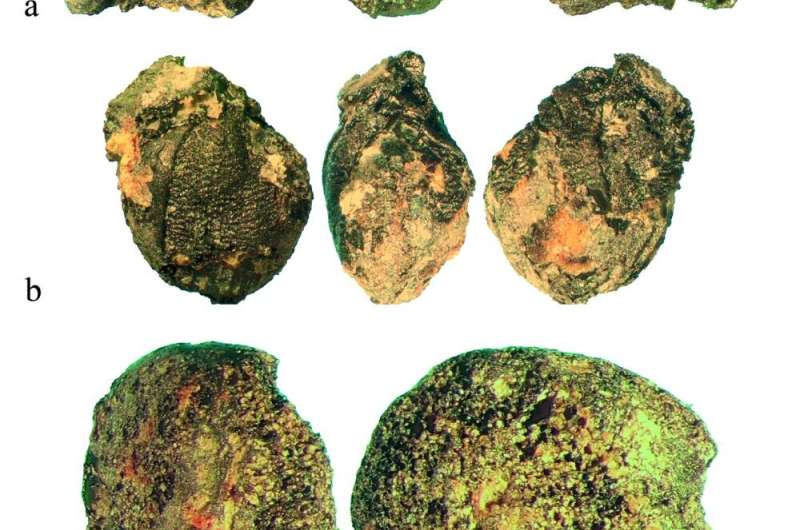
Bronze Age mining sites relied on outside sources to deliver pre-processed food to sustain the community, according to a study published March 24, 2021 in the open-access journal PLOS ONE by Andreas Heiss of the Austrian Academy of Sciences and colleagues.
Bronze Age copper mining sites are thought to have been specialized communities of craftspeople and miners that would not have produced their own food, instead requiring food to be provided by outside sources. While some research has examined the animal-based foods common to these communities, few studies have investigated plants. In this study, Heiss and colleagues contribute to this discussion with an examination of plant remains from the mining site of Prigglitz-Gasteil in the Eastern Alps in Austria, which was active between the 11th and 9th Century BCE.
The study identified a variety of cereal plant remains showing signs of various forms of processing, such as grinding and dehulling, but little evidence of plant remains discarded during processing, such as chaff, or of tools used to process the material. This suggests that much of the site's cereal food was being processed and possibly cooked off-site before being delivered to the miners—and presents the idea of specific groups' cuisine as an archaeobotanical topic worthy of further consideration, beyond simple plant remains.

These results were found to match analyses of other Bronze Age mining sites of the Eastern Alps, but it remains unclear exactly where these delivered foods were being originally processed, whether in nearby farmlands or more distant sources. The authors hope that further study on cereal plant remains and cooking tools at Prigglitz-Gasteil and other sites will help archaeologists piece together the details of how specialized sites were provided essential supplies.
The authors add: "Food is an artefact—just like an axe, a jug or a table. By including such culinary artefacts into "classical" archaeobotany, this study provides not only further evidence on the consumption patterns in Bronze Age mining, but also helps open the door to prehistoric cuisine a little bit further."
Heiss AG, Jakobitsch T, Wiesinger S, Trebsche P (2021) Dig out, Dig in! Plant-based diet at the Late Bronze Age copper production site of Prigglitz-Gasteil (Lower Austria) and the relevance of processed foodstuffs for the supply of Alpine Bronze Age miners.
PLoS ONE16(3): e0248287.
doi.org/10.1371/journal.pone.0248287Citation: Bronze Age mining sites received deliveries of pre-processed foods (2021, March 24) retrieved 28 March 2021 from https://ift.tt/2PkMAC6
This document is subject to copyright. Apart from any fair dealing for the purpose of private study or research, no part may be reproduced without the written permission. The content is provided for information purposes only.
from Hacker News https://ift.tt/2PkMAC6
No comments:
Post a Comment
Note: Only a member of this blog may post a comment.